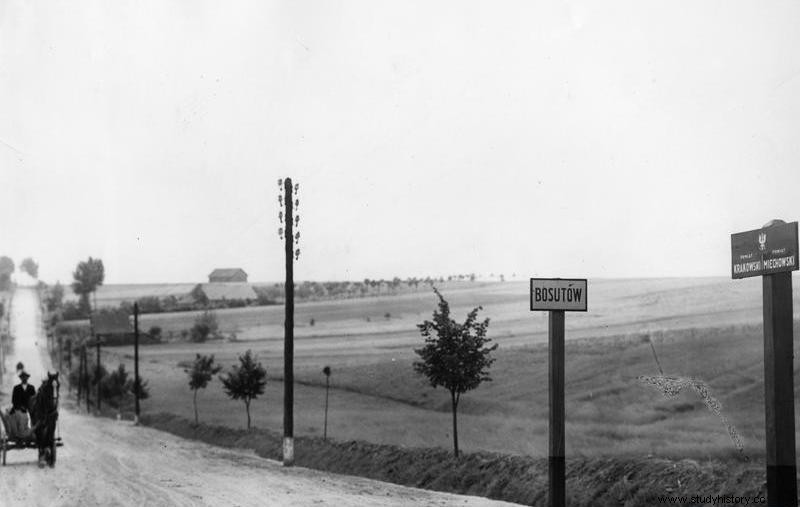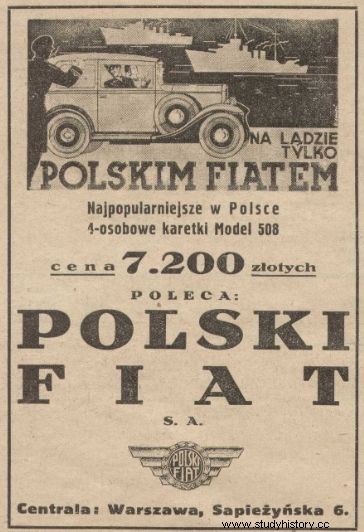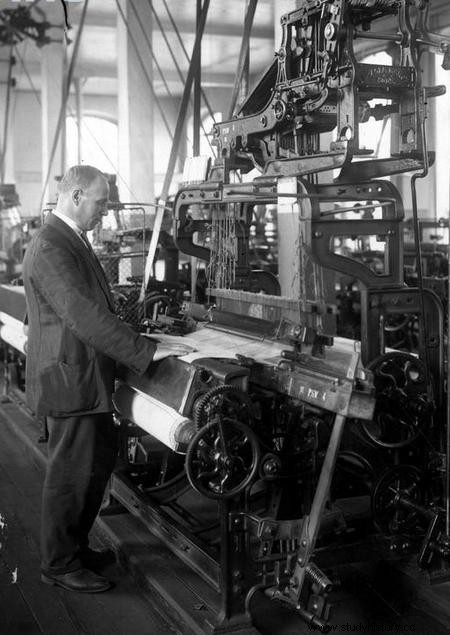A driver in Poland does not have an easy life. Not only are the fuels expensive, but also our roads still leave a lot to be desired. And when there is a nice piece of asphalt, they will put up a speed camera. Maybe it was a poor consolation, but Polish motorists in the interwar period had much worse!
To find out about it, it is enough to check how many kilometers of roads adapted to car traffic have been earned by the Second Polish Republic. Let us reach for a reliable source, that is, published in 1939, "Twenty Years of Communication in Reborn Poland". The authors of this monumental work wrote with disarming frankness:
In Poland, the reconstruction of roads and the use of improved pavements only began in 1928 in Silesia and in 1931 in the rest of the country. Until December 31, 1937, the following was completed:1018 km of stone pavement, 189 km of concrete pavement, 446 km of clinker pavement, 3 km of wooden cubes, 951 km of bituminous pavements (asphalt and tar). Total 2607 km.
In 1938 a further 350 km of roads were rebuilt, so that at the end of that year we had 2,957 km of improved and motorized roads .
Assuming that in 1939 the pace was similar, we can assume that just before the outbreak of the war, Poland had just over 3,000 kilometers of roads, on which you could easily drive a car . Of course, there were also other paved roads in the country. Their total length was on April 1, 1938, 63,169 kilometers.

On such roads it was definitely allowed to drive only in carts (source:public domain).
You probably think it's a lot? Not at all, because in the overwhelming majority of cases it was about streets lined with the so-called cobblestones. As you can easily guess, driving on such roads was neither pleasant nor safe for a car. As a result, they were not called motor roads in the statistical statements.

... or the Polish Fiat!
For comparison, on December 31, 2008, we had a total of 261,000 kilometers of urban and suburban hard-surface roads. If we compare 261,000 with 3,000, it turns out that in our times in Poland there are 87 times more roads than before the war! And this despite the fact that the territory of the state was reduced from 390 to 312 thousand square kilometers after 1945.
Expenditure on road construction, reconstruction and maintenance is also interesting (excluding the Silesian Voivodeship). In the years 1927 / 28-1937 / 1938, PLN 1.36 billion was allocated for this purpose, of which PLN 569 million came from local government budgets. Is it a lot or a little? Definitely not much.
For example, in 1937/38, the expenditure for this purpose amounted to PLN 164 million, of which 63 million was provided by local governments. 101 million spent by the state (76 for construction and reconstruction and 25 for maintenance) accounted for only 4.2% of budget expenditure.
The Achilles' heel of the work performed was also the lack of sufficient funds for maintenance. As one MP argued during the debate on the budget estimate for 1938/39, it contained only 16% of the amounts necessary to maintain state roads in good condition.

Just before the outbreak of the war, there were only 10 cars per 10,000 inhabitants in Poland. The photo shows the Polish Fiat 508 (source:public domain).
There are no roads, no cars
The lack of roads was not conducive to the development of the automotive industry in our country. Suffice it to mention that at the beginning of 1939, only 41,948 cars were registered in Poland. This number included 5,216 taxis, 2,038 buses and 8,609 trucks.
Statistically, there were 10 cars per 10,000 inhabitants in Poland. For comparison, in England the indicator was 511, in France 523, in Germany (including Austria) 251, and in Portugal 63. Even Romania was ahead of us with 13 cars per 10,000 inhabitants.

In the Second Polish Republic, the average Kowalski could only dream of his own car (source:public domain).
Not only were there no good roads, but also car prices - from the perspective of the average Kowalski - remained at a very high level. For example, the cheapest version of the popular 1938 Chevrolet cost PLN 7640.
At the same time, the weekly earnings of a worker in the textile industry oscillated around 30 zlotys. These numbers speak for themselves.
Finally, let's go back to the "20th anniversary of communication in reborn Poland" and see what was written there about our dream highways:
The highway is the ideal of a motorized road that will undoubtedly be the way of the future. In Poland, in view of other numerous and urgent tasks in the field of road construction, for the time being, the studies on the planning of the future road network have been limited .
Does this quote remind you of something?
